Overview
This article highlights the essential features of desktop cooling fans crucial for engineers, focusing on energy efficiency, noise reduction, and user-friendly installation. These features are vital as they enhance performance, ensure optimal thermal management, and contribute to a more productive work environment. The significance of selecting the right cooling solutions in electronic designs cannot be overstated, as it directly impacts overall system reliability and efficiency.
Introduction
Engineers engaged in electronic systems encounter a significant challenge: the effective management of heat dissipation, crucial for ensuring optimal performance and the longevity of components. With the escalating demand for advanced cooling solutions, grasping the fundamental features of desktop cooling fans becomes imperative. This article explores ten essential characteristics that not only bolster thermal management but also meet the increasing expectations for efficiency and user satisfaction.
How can engineers adeptly navigate the intricacies of fan selection to achieve the ideal equilibrium between functionality and design?
Gagner-Toomey Associates: Innovative Cooling Solutions for Desktop Fans
Gagner-Toomey Associates stands at the forefront of innovative specifically tailored for . As the world’s largest producer of both standard and custom air-movers, Gagner-Toomey leverages cutting-edge technologies, including nanolightning—a pioneering method currently being investigated by researchers at Purdue University—and . The company equips engineers with adept at effectively managing heat dissipation in contemporary electronics.
With the global projected to reach $11,653.3 million by 2031, the demand for efficient is on the rise. Notably, are emerging as a viable option for heat fluxes exceeding 100 W/cm, signaling a shift in the industry towards more efficient strategies. Successful implementations, such as spray refrigeration utilized in systems like the CRAY SV2, illustrate the capabilities of these technologies, maintaining junction temperatures between 70 and 85°C for heat fluxes ranging from 15 to 55 W/cm. Furthermore, air refrigeration may remain a feasible alternative for heat flux densities up to 50 W/cm.
Gagner-Toomey’s comprehensive portfolio includes:
- DC input Tube Axial units
- Centrifugal Blowers
- Integrated temperature control solutions, including a desktop cooling fan
This solidifies their position as a trusted partner for professionals aiming to enhance thermal management within their designs.
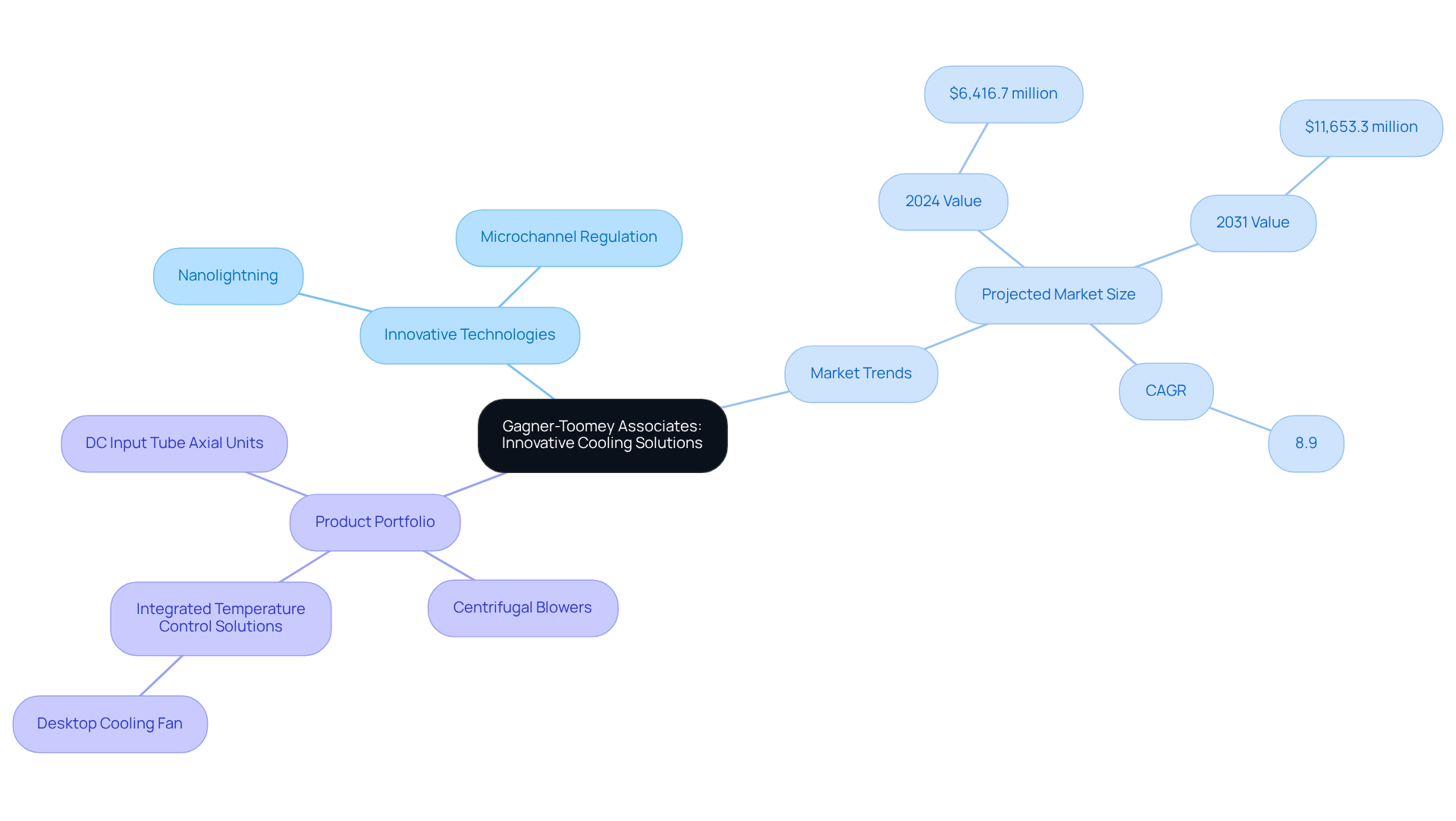
Variable Speed Control: Essential for Customizable Cooling
Variable speed regulation stands as a pivotal element that empowers users to tailor the performance of desktop devices to meet their specific needs. This technology facilitates real-time adjustments based on ambient temperature, workload, and noise preferences, thereby ensuring optimal .
By leveraging , professionals can strike a balance between efficient temperature regulation and noise reduction—an essential consideration in environments where both performance and acoustics hold significant importance. Notably, over 70% of electronics engineers are currently incorporating into their designs, reflecting a strong trend towards adjustable thermal management solutions.
As we approach 2025, the demand for such adaptable temperature regulation systems is projected to escalate, driven by the anticipated growth of the PWM secondary side controllers market, which is expected to expand at a CAGR of 8.9% from 2024 to 2031.
Experts emphasize that fine-tuning the speeds of a desktop cooling fan at varying temperature thresholds not only enhances airflow but also considerably decreases energy consumption. PWM technology minimizes energy waste by adjusting the power supply, resulting in a potential reduction of up to 20% in power consumption compared to traditional models.
Furthermore, PWM devices have the capability to extend the lifespan of electronic components by as much as 50%, underscoring the significance of variable speed technology in modern desktop temperature management solutions.
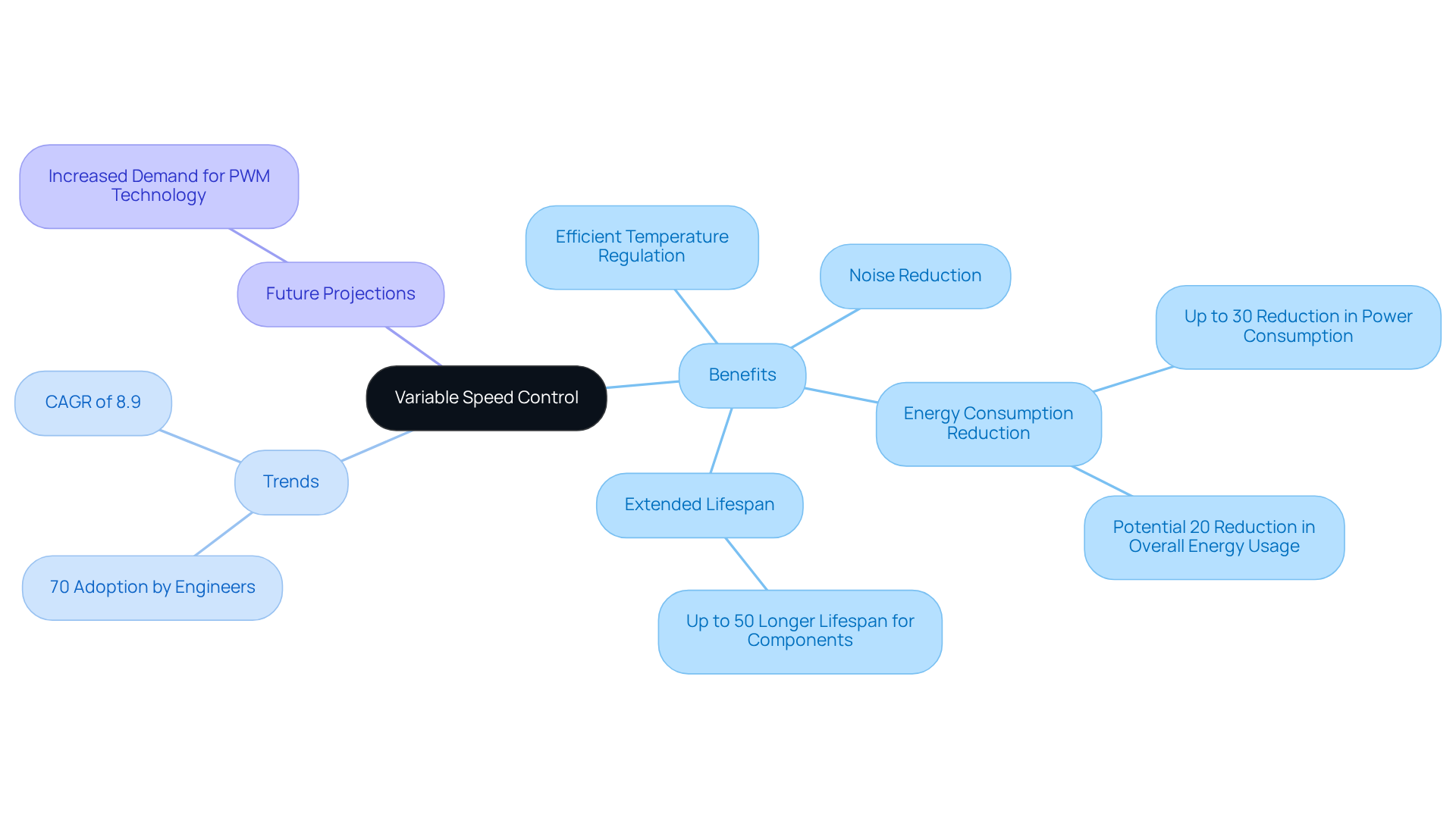
Noise Reduction Technology: Ensuring Silent Operation
is essential for minimizing operational sound levels, allowing to operate quietly while ensuring . Key features, including:
- Optimized blade designs
are integral to achieving silent operation. Furthermore, dynamic speed controls empower ventilators to adjust their operation based on system temperature, significantly enhancing . For engineers, the selection of devices with is vital in fostering a focused work atmosphere, particularly in environments where concentration is paramount. The importance of efficient is underscored by the alarming statistic that over 600 individuals lose their lives each year due to extreme heat. Recent advancements in silent desktop cooling fan technology have led to models that achieve sound levels as low as 10-20 dBA, making them nearly imperceptible. This evolution not only enhances user comfort but also markedly , thereby improving overall productivity.

High Airflow Design: Maximizing Cooling Efficiency
Maximizing cooling efficiency in desktop devices fundamentally relies on a , making a crucial for from components. Desktop cooling fans with elevated CFM (cubic feet per minute) ratings are indispensable because they ensure a significant volume of air circulates around heat-generating parts, thus maintaining optimal operating temperatures.
For instance, of DC input Tube Axial devices, meticulously optimized for performance and efficiency, with sizes spanning from 15 to 280mm. These fans are equipped with features such as IP protection and , rendering them suitable for diverse applications. Additionally, their centrifugal blowers, available in dimensions from 15 to 225mm, provide adaptable solutions for various temperature regulation needs.
Notably, the Arctic P12 Pro fan delivers an impressive airflow of 77 CFM; however, Gagner-Toomey Associates’ offerings ensure engineers have access to dependable tailored to their specific requirements. Moreover, strategically designed blades can significantly enhance airflow while minimizing turbulence, thus amplifying .
not only facilitate improved heat dissipation but also bolster overall reliability, as an effective desktop cooling fan is vital for the longevity of electronic components. By concentrating on supporters with these attributes, engineers can substantially enhance the temperature regulation of their setups with a desktop cooling fan.
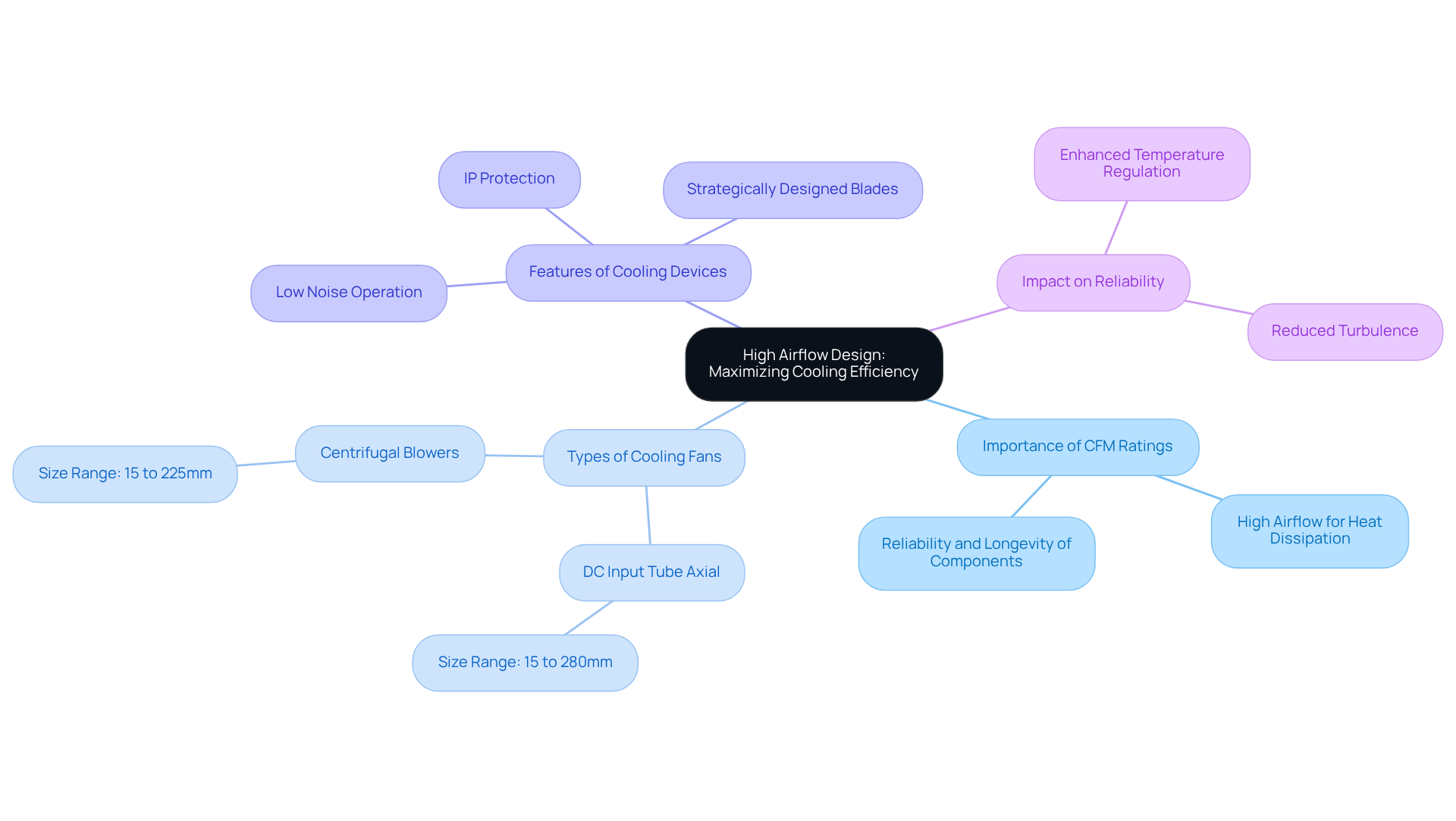
Size and Compatibility: Finding the Right Fit for Your Setup
Choosing the appropriate requires meticulous consideration of dimensions and compatibility, both of which are essential for optimal performance. with their specifications, including mounting options and airflow direction. For instance, 120mm blowers are ideal for larger systems due to their ability to move more air at lower RPMs, resulting in quieter operation and enhanced cooling efficiency. Additionally, , typically offer improved long-term durability, as they experience less wear from operating at slower speeds. Conversely, where space is limited, as they generate greater static pressure despite operating at higher noise levels. Notably, 80mm models are generally more affordable than their 120mm counterparts, making them a cost-effective choice for smaller configurations.
, such as heat sinks and enclosures, is equally vital. Engineers often face challenges when integrating fans into existing setups, particularly when dimensions do not align with the available space. A case study highlights the importance of ensuring that the meets or exceeds that of the CPU to prevent overheating, which is crucial for maintaining performance and reliability. By addressing these considerations, professionals can circumvent installation issues and improve by using a desktop cooling fan, guaranteeing that their systems function efficiently and reliably.
In 2025, the importance of fan dimensions in thermal management cannot be overstated. Appropriately sized fans not only enhance airflow but also contribute to the longevity of electronic components by sustaining optimal operating temperatures. Furthermore, engineers should recognize that are often available within 24 hours, facilitating prompt replacements or repairs. Therefore, prioritizing the selection of a desktop cooling fan based on both size and compatibility is essential for achieving in their applications.

Energy Efficiency: Reducing Power Consumption
Energy efficiency in is critical for minimizing power consumption and operational costs. Engineers must prioritize devices that feature , particularly , which are acknowledged for their compared to traditional AC motors.
, the world’s largest manufacturer of standard and custom air-movers, provides an extensive product line of DC input tube axial fans and centrifugal blowers, available in sizes ranging from 15 to 280mm and 15 to 225mm, respectively. These motors typically achieve , significantly lowering . Furthermore, many models offer IP protection upon request, enhancing their applicability across various environments.
By integrating , such as those provided by Gagner-Toomey Associates, engineers not only enhance the functionality of their electronic devices, including the desktop cooling fan, but also . For instance, the implementation of brushless DC motors can yield energy savings of up to 30% compared to traditional setups, underscoring their effectiveness in reducing power consumption. As the demand for eco-friendly technologies escalates, the incorporation of these into temperature regulation systems becomes increasingly essential.

Durable Construction: Ensuring Longevity and Reliability
Robust design is crucial for ensuring the of . blowers made from , such as reinforced plastics or metals, which are capable of withstanding the rigors of continuous operation. Features such as and further enhance durability, significantly reducing the likelihood of failure. This strategic approach not only ensures over time but also instills confidence in the product’s longevity.
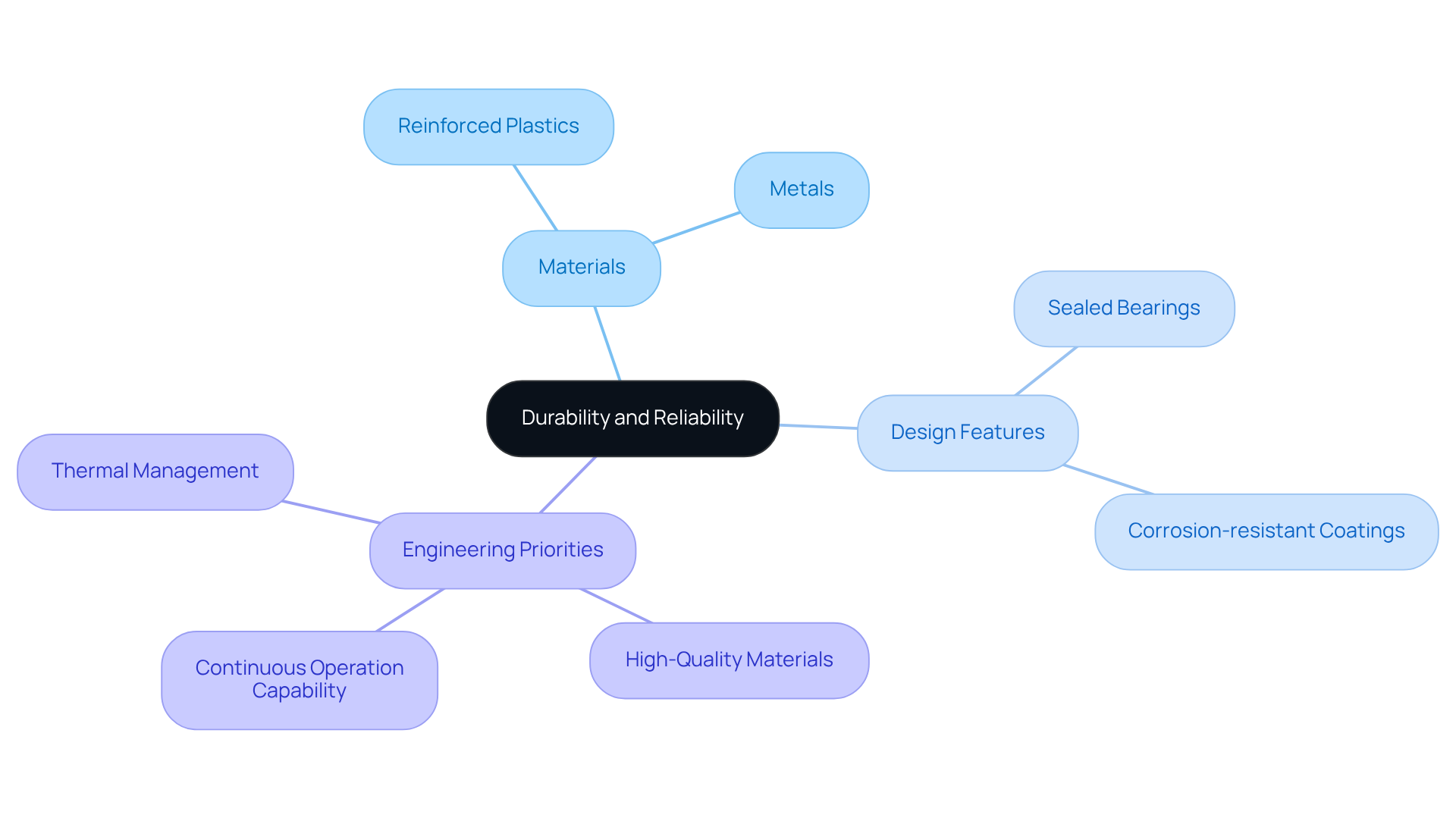
Aesthetic Appeal: Choosing a Fan That Complements Your Workspace
The aesthetic charm of a is not merely a luxury; it is essential in environments where design and functionality must align. devices that deliver while simultaneously enhancing the . Features such as , , and sleek designs serve to significantly elevate the overall aesthetic of electronic setups, fostering a more enjoyable user experience.
As we look ahead to 2025, trends indicate a growing emphasis on the integration of design with functionality. Notably, 67% of consumers express a greater likelihood of purchasing products that are visually appealing and well-designed. This statistic underscores the . Additionally, it is critical to recognize that 94% of initial impressions regarding a website are based on its design, further emphasizing the paramount .
This alignment of aesthetics and performance does more than enhance workspace functionality; it cultivates a positive atmosphere that ultimately boosts productivity and satisfaction among engineers. By choosing a desktop cooling fan that is both effective and visually appealing, engineers can create an environment that not only meets their technical needs but also inspires creativity and efficiency.

User-Friendly Installation: Simplifying Setup and Maintenance
User-friendly installation characteristics are paramount for simplifying the setup and maintenance of . Engineers must prioritize desktop cooling fans that come with , pre-installed mounting hardware, and intuitive designs to facilitate seamless integration into existing systems. The desktop cooling fan features attributes such as tool-less installation and , which can significantly reduce , allowing professionals to concentrate on their core responsibilities.
Notably, 53% of mobile users abandon sites that take more than 3 seconds to load, underscoring the critical need for effective that minimize setup time. As Michael Georgiou aptly states, ‘An excellent for selective products — It’s what your customers expect from every website, software, and application.’
Looking ahead to 2025, the demand for desktop cooling fans with is increasingly pronounced, as professionals seek solutions that enhance efficiency without sacrificing performance. By investing in temperature control solutions that prioritize ease of use, and productivity.
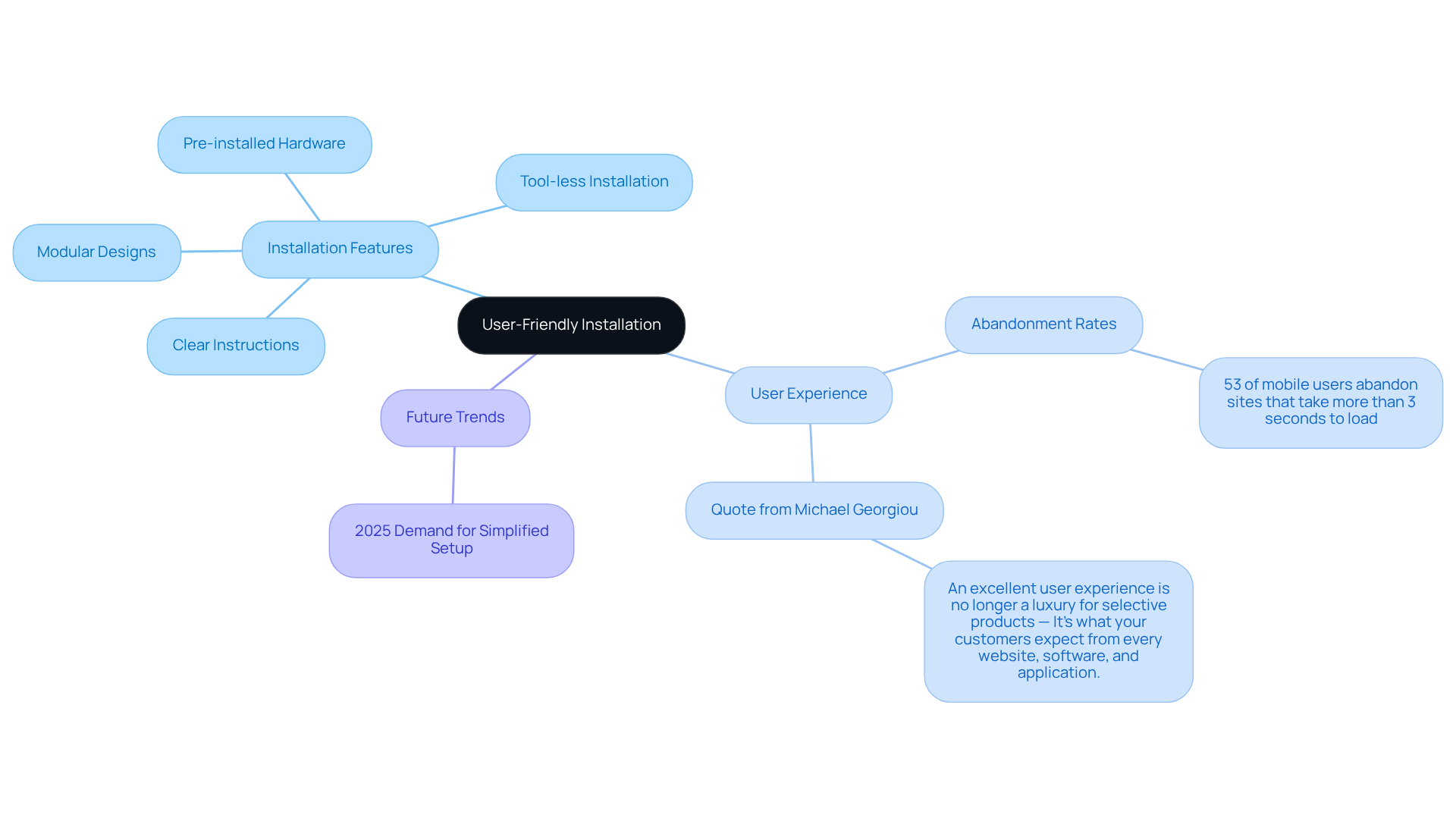
Warranty and Support: Ensuring Peace of Mind with Your Purchase
A comprehensive warranty and reliable are crucial for ensuring peace of mind when purchasing desktop fans. Engineers must prioritize products that offer for longer periods, often extending beyond the standard one to three years. This not only protects the investment but also ensures that any potential issues can be addressed without incurring additional costs.
Responsive customer support significantly enhances the user experience, particularly in troubleshooting and resolving concerns that may arise post-installation. Companies that excel in customer experience report a notable increase in customer loyalty, with 73% of consumers stating that a . As we approach 2025, the demand for effective will grow, making the significance of customer support even more pronounced. Engineers can benefit from prompt support, ensuring that their temperature regulation systems function optimally.
By focusing on these , engineers can make informed decisions and invest in that not only fulfill their technical requirements but also ensure and support. Industry experts emphasize that a are not merely added benefits; they are essential components of a successful purchase in the electronics sector.
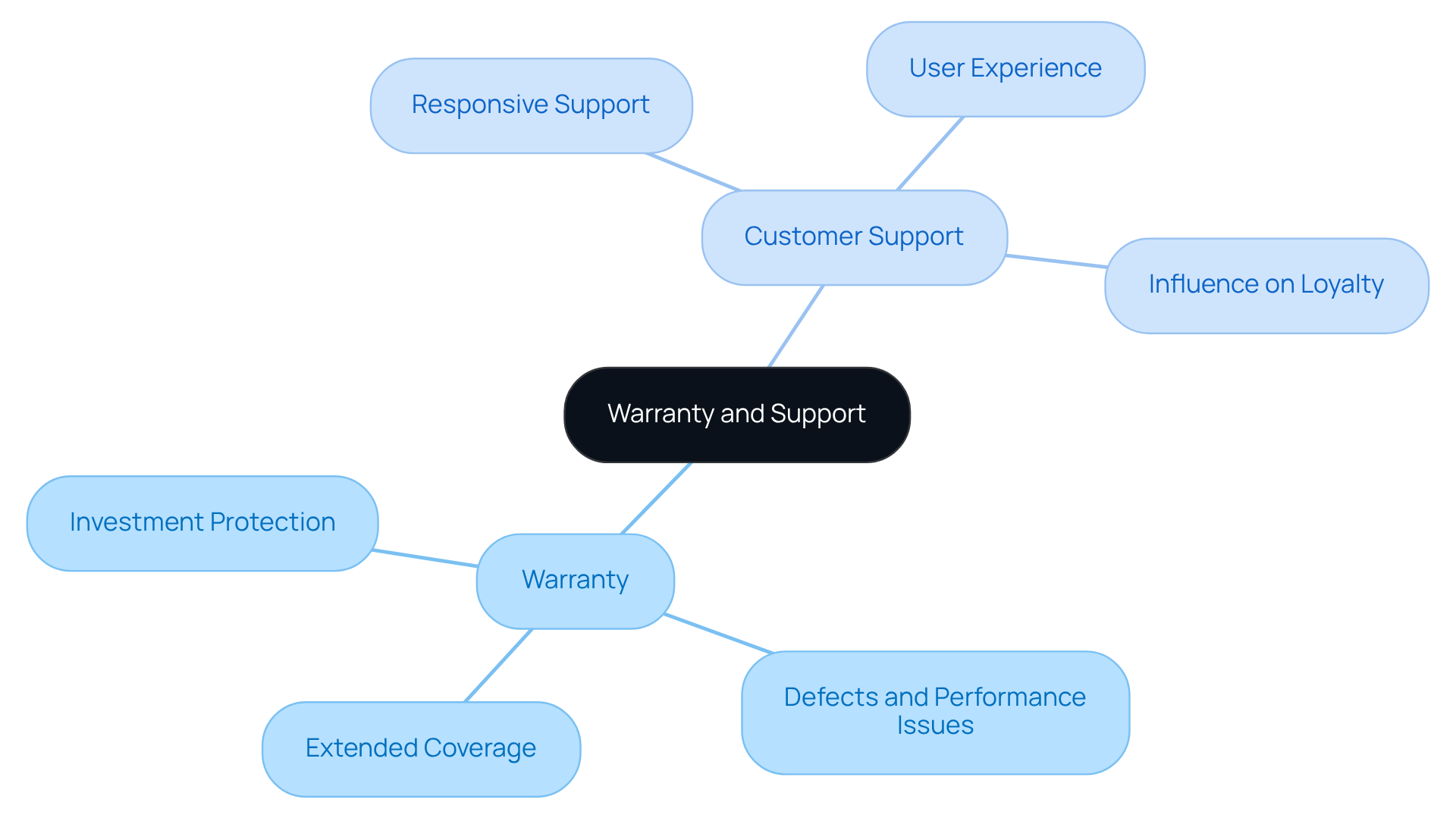
Conclusion
Engineers seeking optimal thermal management solutions recognize that desktop cooling fans are pivotal in enhancing performance and reliability. By concentrating on essential features such as:
- Variable speed control
- Noise reduction technology
- High airflow design
- Energy efficiency
professionals can markedly improve their systems’ cooling capabilities. Gagner-Toomey Associates exemplifies innovation in this domain, offering a diverse array of products tailored to meet various engineering needs.
The insights presented underscore the significance of selecting the appropriate cooling fan. Considerations such as:
- Size compatibility
- Durable construction
- Aesthetic appeal
- User-friendly installation
- Robust warranty and support options
are paramount. These elements not only facilitate effective temperature regulation but also guarantee long-term satisfaction and efficiency in engineering applications. As the demand for advanced cooling solutions escalates, integrating these features will be vital for sustaining the performance and longevity of electronic devices.
Ultimately, prioritizing high-quality desktop cooling fans that embody these critical attributes can enhance productivity and foster a more comfortable working environment. Engineers are urged to stay abreast of the latest advancements in cooling technologies, enabling them to make informed decisions that align with their technical requirements and design preferences.
Frequently Asked Questions
What is Gagner-Toomey Associates known for?
Gagner-Toomey Associates is known for being the world’s largest producer of standard and custom air-movers, specializing in innovative temperature control solutions for desktop cooling fans.
What technologies does Gagner-Toomey utilize in their cooling solutions?
Gagner-Toomey leverages cutting-edge technologies such as nanolightning, which is under investigation at Purdue University, and advanced microchannel temperature regulation.
What is the projected growth of the Electronics Thermal Management Solutions market?
The global Electronics Thermal Management Solutions market is projected to reach $11,653.3 million by 2031, indicating a rising demand for efficient temperature regulation technologies.
What are some effective thermal management strategies mentioned in the article?
Effective thermal management strategies include liquid refrigeration solutions for heat fluxes exceeding 100 W/cm and air refrigeration for heat flux densities up to 50 W/cm. Successful implementations include spray refrigeration systems like the CRAY SV2.
What products are included in Gagner-Toomey’s portfolio?
Gagner-Toomey’s comprehensive portfolio includes DC input Tube Axial units, Centrifugal Blowers, and integrated temperature control solutions, including desktop cooling fans.
How does variable speed control benefit desktop cooling fans?
Variable speed control allows users to adjust the performance of desktop devices in real-time based on ambient temperature, workload, and noise preferences, ensuring optimal thermal management.
What is the significance of PWM technology in temperature regulation?
PWM technology minimizes energy waste by adjusting the power supply, potentially reducing power consumption by up to 20% compared to traditional models, and extending the lifespan of electronic components by as much as 50%.
What features contribute to noise reduction in desktop cooling fans?
Key features that contribute to noise reduction include optimized blade designs, advanced motor technologies, and vibration-dampening materials.
What sound levels can modern desktop cooling fans achieve?
Recent advancements in silent desktop cooling fan technology have led to models that operate at sound levels as low as 10-20 dBA, making them nearly imperceptible.
Why is efficient temperature control important according to the article?
Efficient temperature control is crucial as it can prevent extreme heat-related fatalities, with over 600 individuals losing their lives each year due to extreme heat.

